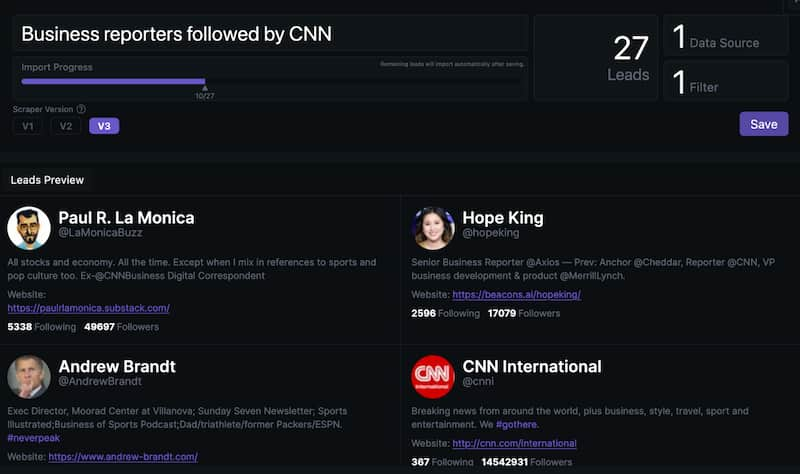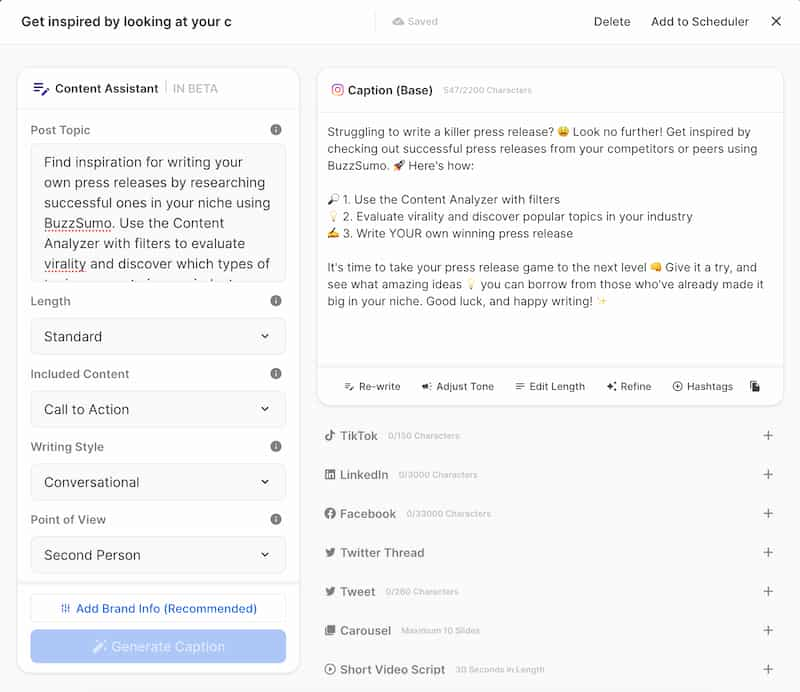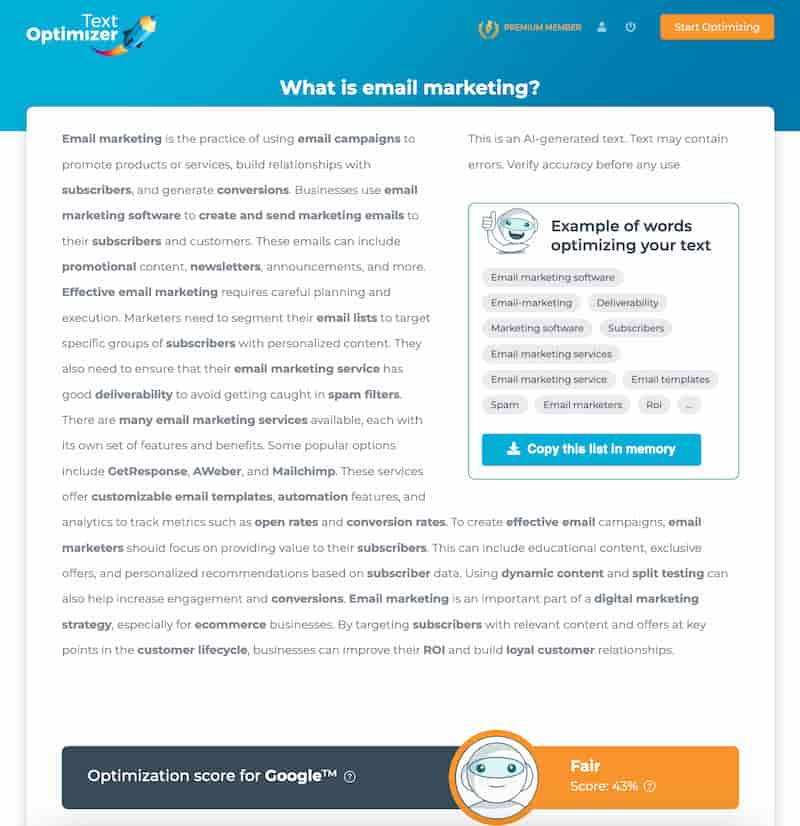Four Creative Ways to Boost, Reuse, and Duplicate Your Content Marketing Efforts
Traditional marketing was – and still is – expensive. It’s also a vague shot in the dark, practically speaking. Then came the Internet, bringing online marketing with it.
Whether you spend time researching and developing content or you hire professional freelance writers, it costs money (or time, or both). For businesses, saving money or making investments work harder is mandatory.
Here are some creative ways to churn, re-use, and duplicate your content marketing efforts. whether it’s for reputation improvement, SEO, social, or branded content.
1. Reach out to the unknown
Information is ubiquitous on the web. Not all of that information is visible, though. As a content marketer, it’s easy to research and find bloggers who allow for contributions or interviews, look for joint venture opportunities, and create many other relationships.
Yet, the people and the opportunities you’ll reach out to are “active” and “published” ones, where someone already took the initiative.
What about the passive bloggers who haven’t yet invited “contributions” to their blogs? How about many of those entrepreneurs who haven’t taken an active stance on the Internet yet?
Just because they didn’t take the initiative yet doesn’t mean you shouldn’t reach out to them. If you were looking to write for other blogs, for example, you can’t work with other bloggers, communicate with them, and engage with them meaningfully if you don’t know much about them.
You’d find it incredibly useful to use tools and channels such as Twitter to do some basic research first. For instance, if you had a web design business, you’d want to search for the #webdesign hashtag and figure out who the thought leaders are in the web design industry.
You can also make use of a free and nifty tool called Followerwonk to find out the extent of these people’s influence by looking at their follower count and other metrics.
Another useful tool called Drippi allows you to export followers of any social media account. Just give it your target Twitter profile and keywords you want to be included in the followers’ bio, like “blogger” or “journalist.”
For example, you may want to find journalists and reporters followed by a CNN Twitter account: Those would probably be journalists you want to build relationships with.
Create a dedicated Twitter list to interact with those important content amplifiers. Help them by providing insights and sources.
Don’t just stop there. Get to know all about them – some easy targets are the About and Contact pages on their website and profiles on other social networks. You can also dig into their business and administration details with a Whois lookup of their website, who hosts the site with WhoIsHostingThis, and so on.
That’s just information though. It’s what you do with this information that matters more. Once you get to know your prospects or target recipients, it’s easy to plan ahead for content planning and outreach.
2. Simultaneous drip across social channels
Can a Facebook update be reused as a parallel update for Twitter, and then for Linkedin?
With a bit of creativity and the right tools, you can. A Facebook update can be wordier, and highlight a picture better than a Twitter update. Facebook updates can also be used as Linkedin updates. You might just have to tweak the update a bit to fit into particular social channels.
If you used the same format on Facebook and Linkedin, you’d get an awkward result. Instead, you’d modify the update (much easier to do it on a tool like HootSuite).
You may use the same update for Facebook and Linkedin, except that you’d have to use specific account handles (separately on each platform or on HootSuite itself before publishing) relevant to the platform.
Flick utilizes AI to let you effortlessly repurpose your content on social media. Simply give it your article URL and the tool will generate social media updates for your various social media channels.
You can play with the customization options and regenerate any post by choosing the style, length, and certain elements (a quote, a CTA, a fact, etc.). Flick will create updates that work for different media, like Instagram captions or long-form Linked in updates and add hashtags.
You can also schedule updates right from Flick.
Text Optimizer is another useful content creation tool that generates semantically relevant content based on a single keyword. It is a great tool to create Youtube descriptions and Medium articles that have better odds to rank in Google, without competing with your main page:
When you are sharing others’ content, find them and tag them according to the platform you are sharing on.
Make sure to monitor your brand mentions to engage with people who are reacting to your social media updates. Listen to what your prospects and niche influencers are talking about and asking. These insights will come in handy for other areas of marketing, like IVR and chatbots when you are creating workflows for those.
3. One content piece fits many
One piece of writing can be used in multiple ways. Here’s how you can do it:
- Once you write a blog post with several research links, statistics, and data, you will publish it, of course.
- Apart from that, each statistic can be used as a social media update. Parts of the post can make for great entries (as insights) on your Facebook and Linkedin.
- Curate posts on a similar topic and compile it into a report. Give the report away to your subscribers for free, or make them pay with a tweet.
- Rework the post into an actual audio recording and launch a podcast. Set up shop on iTunes and elsewhere on the web to have others subscribe to your podcast.
- Curate all the statistics and research you already have for your posts in the form of images, and create an infographic.
- Alternatively, create slide decks and share it on social media (along with SlideShare). You may even use these slide decks to create a short webinar and post the recorded video on Vimeo and YouTube, or even Facebook
It takes a lot of impressions for your potential customer to remember your brand, and this repurposing technique makes it doable.
That’s just one piece of content (sometimes we club other pieces of content too). You can work several different ways for every piece of content you develop. The key is to leverage your assets.
It is also a good idea to create a slightly different SEO strategy for all these assets using ChatGPT. Get the tool’s help to create original titles and captions for your various content assets to avoid them competing with one another in organic search.
All pieces of content, by the way, are assets.
4. No matter what your business is, maintain a multi-user blog
You can set up a multi-user blog in many ways – hire multiple bloggers and create accounts for them (and give them their credit), encourage contributions, or encourage people within your network to write for you in exchange for exposure.
There’s a reason for doing this: every author on your blog has the motivation to promote, showcase, and share their own content much more than they’d be inclined to share yours. Apart from your own visitor strength and social reach, you’d get to leverage others’ social networks too.
If you had a total of 15 authors/bloggers writing content, and assuming each blogger had 1000 followers across their social networks, every single post “liked” or “shared” on Facebook would expose you to a potential reach of 15,000, and total views will count to more than that figure.
Final thoughts
While content marketing opens up new opportunities for businesses, it’s important to acknowledge that it is an investment, and you get what you pay for. Creating valuable and engaging content either requires an investment of time and effort for research and development or financial resources to hire professional freelance writers.
However, for businesses looking to optimize their content marketing efforts and save costs, there are creative ways to churn, reuse, and duplicate content effectively. By repurposing existing content across different platforms and mediums, businesses can extend their reach, engage with a broader audience, and enhance their return on investment.



